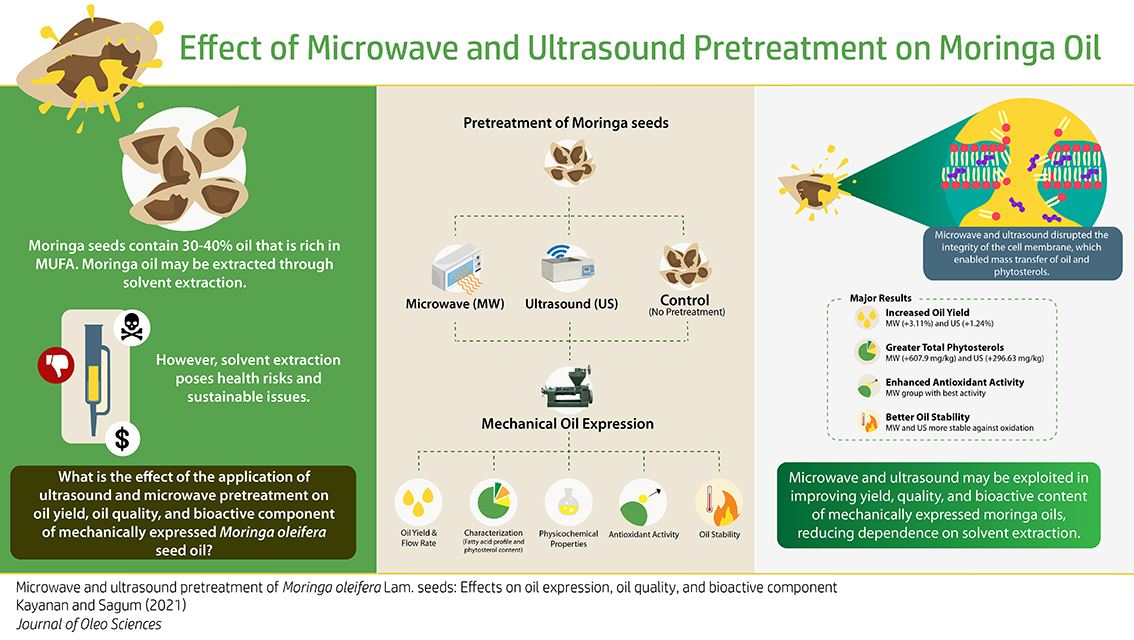- 著者
- Barry Union R. Kayanan Rosario S. Sagum
- 出版者
- Japan Oil Chemists' Society
- 雑誌
- Journal of Oleo Science (ISSN:13458957)
- 巻号頁・発行日
- vol.70, no.7, pp.875-884, 2021 (Released:2021-07-01)
- 参考文献数
- 42
- 被引用文献数
- 6
This study investigates the application of green technologies (microwave and ultrasound pretreatment) in the extraction of Moringa oleifera Lam. seed oil and its effects on oil expression, oil quality, and bioactive component. Moringa seeds were pretreated with microwave (90 W, 60 s) or ultrasound (50 W, 1 h) before mechanical expression. A separate group received no pretreatment before oil extraction. Oils from these groups were then compared. Results show that oil yield increased with ultrasound pretreatment (1.24%) and significantly increased with microwave pretreatment (3.11%). For oil flow rate, the microwave and ultrasound pretreatment resulted in faster extraction (7.67 and 6.93 kg/h respectively) as compared with the control (6.51 kg/h). For physicochemical parameters, the microwave and ultrasound group had significantly less free fatty acids and significantly greater unsaponifiable matter as compared with the control. For fatty acid composition, results show that moringa seeds procured from Davao Oriental had greater oleic acid content (~77%) as compared with those reported by other literature. For phytosterol content, the predominant phytosterols found were β-sitosterol, stigmasterol, and campesterol. Microwave and ultrasound pretreatment significantly increased total phytosterol (680.58 and 369.32 mg/kg respectively) as compared with the control (72.69 mg/kg) due to the mass transfer of the phytosterols. Microwave and ultrasound pretreatment also led to stigmastanol formation. For antioxidant activity, a comparison of both DPPH and FRAP assays depicts that the microwave group exhibited the best overall antioxidant activity. Lastly, for oil stability, a lower peroxide value was found in the microwave and ultrasound groups across time intervals, which may be attributed to their antioxidant activity. In summary, ultrasound and microwave pretreatment can improve oil expression, oil quality, and bioactive content of the mechanically expressed moringa oils.
